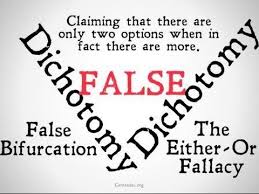by Erica L. Meltzer | Sep 1, 2015 | Blog, SAT Reading
I recently came across an inquiry from someone using the The Critical Reader to study for the SAT. The student in question had been getting all the exercise questions right in the book itself, but when he took full practice tests, he started making mistakes. How should he proceed?
While I don’t know exactly what was happening when the student took those tests, I can wager a pretty good guess.
Because The Critical Reader is organized by question type, each set of exercises focuses on a particular concept and follows a chapter focusing on that same concept. Not only is the strategy information is still pretty fresh for most people when they look at the questions, but they already know what concept every question will be testing.
When they go to take a practice test, however, that scaffolding is suddenly taken away. All the question types are mixed up together, and there’s no predicting what will come next. In addition, it is necessary to recall many different strategies and nuances of the test in rapid sequence, without any prompting about which ones are necessary. That’s a big strain on working memory. Most likely, the student was simply reading the questions and choosing answers without really considering what category each question fell into and what sort of approach would be required to answer it most effectively.
So if you find yourself in a similar situation, here’s my advice: You essentially have to create a bridge between the book and the test. Choose a couple of Reading sections and don’t worry about time. Go through each question and label it with its category (function, tone, inference, etc.).
Now, before you do each question, stop and review the strategy you need for it, e.g. remind yourself to read before and after the line reference for function questions, play positive/negative, and remember to mark off all the “supporting evidence” pairs.
Work this way for a couple of sections, or even a full test — however long it takes for the process to become more automatic. The goal is to practice identifying which strategies are necessary and get used to applying them when no one (me) is holding up a sign telling you what to look for.
When the process feels more automatic, take a timed test and see what holds. Then repeat as necessary.
by Erica L. Meltzer | Aug 29, 2015 | Blog, College Admissions
From “Yale Students Campaign for All That Jazz:”
[Yale University Director of Bands Thomas C. Duffy] said he had encountered a shortage of qualified trombone and trumpet students, a situation he observed at other Ivy League schools trying to muster a big band. While he offered to lend music to the collective as it tried to reconstitute the jazz ensemble, he said he would be “stunned” if they could sustain 17 top-flight section players throughout the year.
Hmm… Tuba players have always been in short supply, but maybe the brass players will start getting ranked up there with the fencers and the squash players.

by Erica L. Meltzer | Aug 28, 2015 | Blog, Issues in Education
But claiming that there is apparently makes for a good headline.
Knowledge and skills are intertwined; unless schools start acknowledging that critical thinking can only result from detailed content knowledge, conversations about what’s ailing American education will continue to be an exercise in nonsense.
The fact that anyone can use the phrase “knowledge-based learning” in a non-ironic way creeps me out to no end.
What’s next? Word-based reading? Number-based math? Language-based speech?
I don’t believe Common Core is really going to change many things here. It’s a set of skills; it does not lay out a coherent, specific body of knowledge. The ELA standards, at least, are so vague and repetitive as to be virtually meaningless, and would be met automatically in any rigorous traditional classroom headed by a knowledgeable, well-trained teacher.
If school districts use CC to implement a more content-rich curriculum, that is their choice. Requiring students to learn any particular set of facts, no matter how anodyne, is so politically contentious that no one would dare attempt such a thing at the national level.
Writing in the New York Times, Natalie Wexler acknowledges that:
…engineering the switch from skills to knowledge will take real effort. Schools will need to develop coherent curriculums and adopt different ways of training teachers and evaluating progress. Because the federal government can’t simply mandate a focus on knowledge, change will need to occur piecemeal, at the state, school district or individual school level.
To believe that such a change could miraculously occur “piecemeal” goes far beyond wishful thinking and into the realm of pure fantasy. And no, the fact that a bunch of people have downloaded a free online curriculum isn’t exactly going to compensate. Poor scores on CC tests are unlikely to simply “incentivize” low-income schools to shift over to a stronger emphasis on subject content, especially if their curriculums are effectively centered around test-prep. Besides, doing things in such a haphazard fashion is a pretty great way to ensure that huge disparities (geographic, economic, etc.) continue to exist.
When you take a crop of teachers indoctrinated by ed schools to believe that lecturing and memorization are forms of child abuse; pair them with administrators who use the threat of poor evaluations to keep less progressive teachers in line; and mix in an obsession with testing and accountability, you end up with a chaotic system driven by quick fixes. (But hey, no worries, the market will sort it out, right?)
In order for the focus to shift more towards teaching content, you need a critical mass of people who believe that subject knowledge is the basis for critical thinking, both in the classroom and in the administrative offices. Right now, those people are in pretty short supply. And with the number of people entering teaching dwindling, the chance of getting highly educated/knowledgeable/competent teachers, who believe even partially in the importance of transmitting knowledge, in front of classrooms on any sort of wide scale in the near future is pretty small.
The Right isn’t exactly helping here either. Rather than embrace what would actually be a conservative concept of education (classical curriculum, back-to-basics, etc.), they’re too busy screaming about school choice and privatizing everything.
It’s a perfect storm of factors, and while everyone is busy setting up false dichotomies and waiting for technology to save the day, the descent into chaos continues.
I think a commenter named Emile from NY said it best:
I don’t know in depth the various pedagogical theories about K-12 education, but from the perspective of a college professor who’s been teaching at a mid-tier university for more than 25 years, K-12 education has been in a steady decline over the past few decades, and [E.D.] Hirsch is absolutely right about the reason for it.
I ask everyone in K-12 education this: What should a college professor who is teaching a course on Enlightenment ideas do in the face of a whole class of intelligent freshmen who don’t know the dates of the Civil War, or the Second World War, or the French Revolution, or know that once upon a time there was a Roman Empire? How, exactly, would you proceed? Or how, exactly, would you proceed in a basic college course in mathematics when faced with a college class of intelligent freshmen that can’t, as a whole, move easily between fractions, decimals and percents?
People hate the word “memorization,” but I’m here to tell you students love it. People who malign memorization often ask, “Why should anyone memorize dates that they’re bound to forget?” Not every date is remembered over the long haul, but the mind loves inductive reasoning, and has a way of gathering particular dates loosely into centuries, and from there building a kind of organized closet into which more knowledge can be added.
I’m not suggesting that first graders need to be able to able to discourse in detail about ancient Mesopotamia, but seriously, is it that unreasonable for college students to be expected to have a basic understanding of what happened in the past?
by Erica L. Meltzer | Aug 23, 2015 | ACT English/SAT Writing, Blog, SAT Grammar (Old Test)
Shortcut: semicolon + and/but = wrong
If you see an answer choice on either the SAT or the ACT that places a semicolon before the word and or but, cross out that answer immediately and move on.
Why? Because a semicolon is grammatically identical to a period, and you shouldn’t start a sentence with and or but.
The slightly longer explanation: In real life, semicolon usage is a little more flexible, and the choice to use when can sometimes be more a matter of clarity/style than one of grammar. It is generally considered acceptable to place a semicolon before and or but in order to break up a very long sentence, especially when there are already multiple commas/clauses.
For example:
Pamela Meyer, a certified fraud examiner, author, and entrepreneur, became interested in the science of deception at business school workshop during which a professor detailed his findings on behaviors associated with lying; and she subsequently worked with a team of researchers to survey and analyze existing research on deception from academics, experts, law enforcement, the military, espionage and psychology.
In the above sentence, either a comma or a semicolon could be used before and. In this case, however, the sentence is so long and contains so many different parts that the semicolon is a logical choice to create stronger break between the parts.
Why not just use a period? Well, because a semicolon implies a stronger connection between the clauses than a period would; it keeps the sentence going rather than marking a full break between thoughts. Again, this is a matter of style, not grammar.
The SAT and the ACT, however, are not interested in these details. Rather, their goal is to check whether you understand the most common version of the rule. Anything beyond that would simply be too ambiguous.

by Erica L. Meltzer | Aug 20, 2015 | Blog, General Tips, The New SAT, Tutoring
As I’ve mentioned elsewhere on this site, I’m often a tutor of last resort. That is, people find their way to me after they’ve exhausted other test-prep options (self-study, online program, private tutor) and still find themselves short of their goals. Sometimes very, very far short of their goals. When people come to me very late in the process, e.g. late spring of junior year or the summer before senior year, there’s unfortunately a limited amount that I can do. Most of it is triage at that point: finding and focusing on a handful of areas in which improvement is most likely.
Not coincidentally, many of the students in this situation who find their way to me have been cracking their heads against the SAT for months, sometimes even a year or more. Often, they’re strong math and science students whose reading and writing scores lag significantly behind their math scores, even after very substantial amounts of prep and multiple tests. They’re motivated, diligent workers, but the verbal is absolutely killing them. Basically, they’re fabulous candidates for the ACT. (more…)

by Erica L. Meltzer | Aug 19, 2015 | Blog, The New SAT
In case you haven’t seen them, they can be downloaded https://collegereadiness.collegeboard.org/sat/practice/full-length-practice-tests
The basic formula for determining scaled scores is simple enough (count how many you got right, convert to a raw score, and multiple by 10); however, if I hadn’t witnessed some of the College Board’s recent antics, I sincerely would have thought that the subscore charts were some kind of parody.
If want a definition for convoluted (assuming you’re taking the SAT before March 2016), this pretty much sums it up. Just looking at those charts gives me a headache.
I’m sorry, but does anyone truly think that college admissions officers with thousands of applications to get through are going to even LOOK at those sub-scores?
But as everyone knows, more data is always better. Except, of course, when it isn’t.


